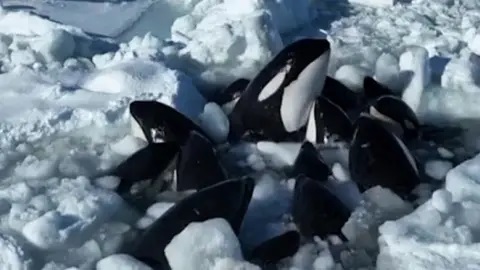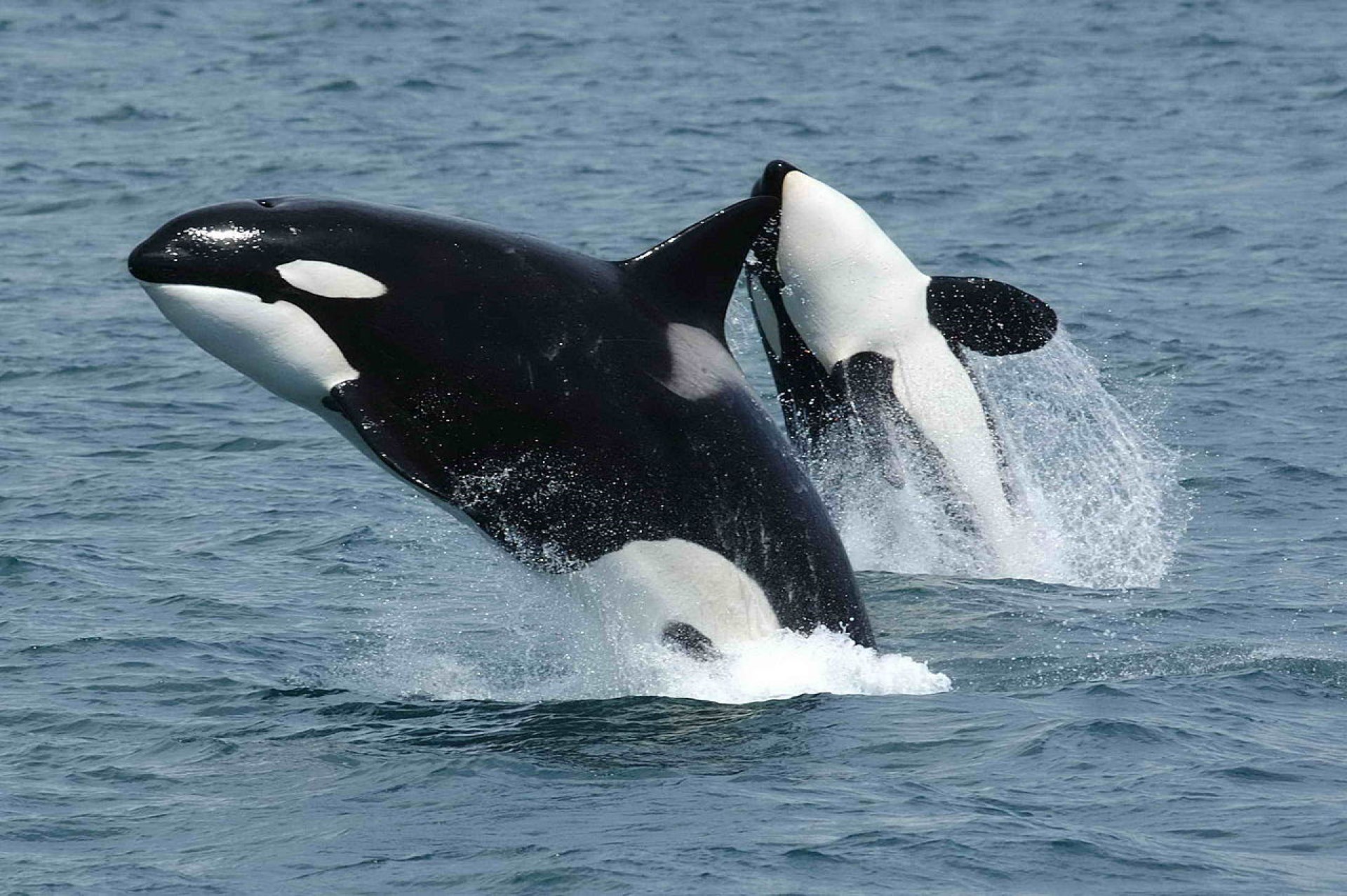This pod of Orca have been trapped, with only this small opening to breathe from. Unlike other marine mammals, orca generally stay close to the surface, and breathe regularly, which can make this a death trap.
While Orca have been timed, holding their breathe for 15 minutes, they usually take shallow dives of up to a minute, or deeper dives lasting 3-4 minutes. While Orca can hit speeds of almost 30 miles per hour, this is usually only over short distances, and they could not sustain this for long under water – especially without being able to take a breathe.
Thankfully, in the last few hours, these animals have managed to get free.


